Mokseogwon (목석원)
16.7Km 2021-03-30
159, Jeonseo-ro, Andong-si, Gyeongsangbuk-do
+82-54-852-3788
It is a folk-food specialty restaurant with beautiful scenery and group seats, for various gatherings. This Korean dishes restaurant is located in Andong-si, Gyeongsangbuk-do. The representative menu is Andong-style bibimbap.
La Forêt Oknyeobong de Sobaeksan (소백산 옥녀봉자연휴양림)
16.8Km 2016-09-05
124, Therapy-ro, Bonghyeon-myeon, Yeongju-si, Gyeongsangbuk-do
+82-54-639-7490~3
La forêt Sobaeksan est située sur le mont. Sobaeksan, un endroit idéal pour se détendre avec de magnifiques sentiers forestiers. Elle a aussi été rendue célèbre pour organizer le “festival des azalées royales de Sobaeksan“. Les installations comprennent des bungalows, une cuisine communautaire, des douches, une salle de classe en plein air et une aire de stationnement.
La forêt bénéficie d’une vue imprenable du mont. Sobaeksan sur Gukmangbong, Birobong et le pic Dosolbong. Les attractions voisines comprennent le temple Buseoksa, l’école confucéenne Sosuseowon et la vallée Huibang.
Hahoe Matjip (하회맛집)
17.0Km 2021-03-22
214-6, Jeonseo-ro, Andong-si, Gyeongsangbuk-do
+82-54-853-3776
This place sells Andong's representative food. This Korean dishes restaurant is located in Hahoe Village, Gyeongsangbuk-do. The representative menu is Andong braised chicken.
Andong Jip (안동집)
17.0Km 2021-03-23
214-6, Jeonseo-ro, Andong-si, Gyeongsangbuk-do
+82-54-843-0054
It is a place where you can have a meal in Ondol, a traditional Korean house styles. This restaurant's signature menu is set menu with grilled salted mackerel. This Korean dishes restaurant is located in Andong-si, Gyeongsangbuk-do.
Cheonggiwa Minsok Sikdang (청기와민속식당)
17.0Km 2021-03-24
214-6, Jeonseo-ro, Andong-si, Gyeongsangbuk-do
+82-54-852-8361
It is a restaurant that sells delicious Jjimdak (steamed chicken) and seafood pancake. This Korean dishes restaurant is located in Andong-si, Gyeongsangbuk-do. The most famous menu is Andong braised chicken.
Ihwa Sikdang (이화식당)
17.0Km 2021-03-24
214-6, Jeonseo-ro, Andong-si, Gyeongsangbuk-do
+82-54-842-3456
This Andong Jjimdak restaurant is located near Hahoe Village. This Korean dishes restaurant is located in Andong-si, Gyeongsangbuk-do. The most famous menu is andong braised chicken.
Bune Sikdang (부네식당)
17.0Km 2021-03-24
214-6, Jeonseo-ro, Andong-si, Gyeongsangbuk-do
+82-54-821-2738
This is a place where you can enjoy Andong Jjimdak, the representative dish of Andong. The best menu at this restaurant is bibimbap. This Korean dishes restaurant is located in Andong-si, Gyeongsangbuk-do.
Hahoe Minsok Sikdang (하회민속식당)
17.0Km 2021-03-24
214-6, Jeonseo-ro, Andong-si, Gyeongsangbuk-do
+82-54-853-0521
This is a place where you can enjoy Andong steamed chicken and grilled mackerel, the representative foods of Andong. This Korean dishes restaurant is located in Andong-si, Gyeongsangbuk-do. The most famous menu is Andong braised chicken.
Okryujeong (옥류정)
17.0Km 2016-09-05
191-9, Jeonseo-ro, Pungcheon-myeon, Andong-si, Gyeongsangbuk-do
Located at the foot of the tourist hot spot, ‘Hahoe Folk Village’, this restaurant combines a Bed and Breakfast service and offers Andong’s famous local traditional food called ‘Heot Jesa Bap’, a kind of Korean table d’hote offered at ancestral memorial services.
‘Jesa’ is a Korean traditional ritual of remembering the ancestors and giving offerings (mainly dishes called ‘jesa bap’) to the ancestors of each household.
Many interesting wild green dishes called ‘namul’ are elegantly served in porcelain tableware.
You can’t also miss out on Korean traditional pan-fried dishes like ‘jeon’ and ‘sanjeok’ and usually served with delicious homemade sesame seed oil and soy sauce.
Another famous local traditional food is called ‘Andong Gangodeungeo’ which is salted mackerel.
In fact, you can even purchase this salted fish at the folk gallery connected to this restaurant.
Musée des masques Hahoedong (하회동 탈 박물관)
17.0Km 2020-06-11
206, Jeonseo-ro, Pungcheon-myeon, Andong-si, Gyeongsangbuk-do
+82-54-853-2288
Inauguré en septembre 1999, ce musée spécialisé en masques se trouve à l’entrée du village folklorique Hahoe, haut lieu touristique rendu plus célèbre par la visite de la reine d’Angleterre Elisabeth lors de son anniversaire, la même année. Il a été élevé par Monsieur Kim Dong-Pyo qui est à la fois l’actuel directeur de cet établissement et le détenteur du savoir-faire ancestral pour ce patrimoine culturel incorporel n° 69.
Le masque Hahoe est le seul masque à être déclaré trésor national en Corée du sud. Porté lors du spectacle de masques « Hahoe byeolshin gut », il se déclinait initialement en 12 masques humains et en 2 masques animaux, mais après la disparition de 3 masques humains, seuls 11 masques humains et animaux subsistent de nos jours.
L’année exacte de leur fabrication est ignorée, mais ils sont présumés être confectionnés vers le onzième et le douzième siècle. Si ces masques ont pu être transmis à travers de longs siècles, c’est parce qu’ils ont été portés uniquement durant le spectacle Hahoe byeolshin gut qui avait lieu une fois par an, puis récupérés et conservés ensemble au même endroit dès la fin du spectacle. L'interdiction d’accéder aux masques a donc probablement contribué à leur conservation.
La masque Hahoe est asymétrique gauche/droite comme un visage humain, et quelques masques ont un menton séparément fabriqué et applicable au visage par des ficelles, ce qui favorise diverses expressions selon les angles et les mouvements.
Les masques originaux Hahoe se trouvent au musée national Jungang à Séoul. Dans le musée des masques Hahoedong sont exposés 19 sortes de masques coréens répartis en 300 pièces, y compris des copies confectionnées par le directeur de l’établissement, et 500 masques de 35 pays étrangers.
Vous pourrez également voir le processus de fabrication de masques avec des courges, du bois et du papier de riz ainsi que des poupées de cire des personnages du spectacle et divers accessoires. Dans la cour de 300 m2 se tiennent nombreux spectacles de masques lors du festival international de la danse des masques, fête connue organisée par la ville d'Andong.
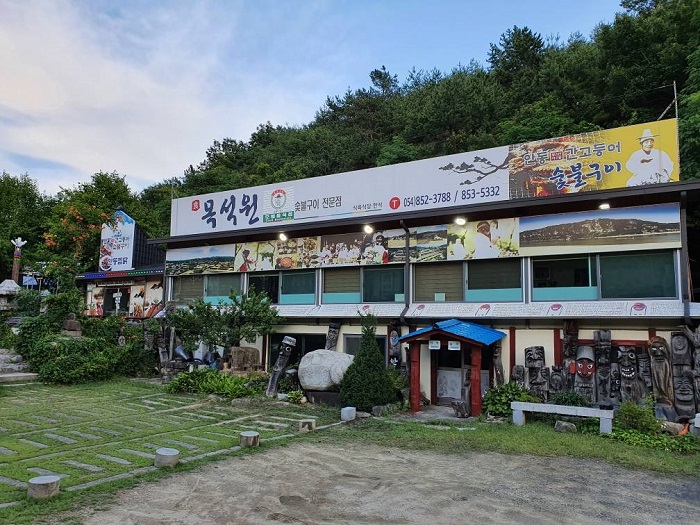
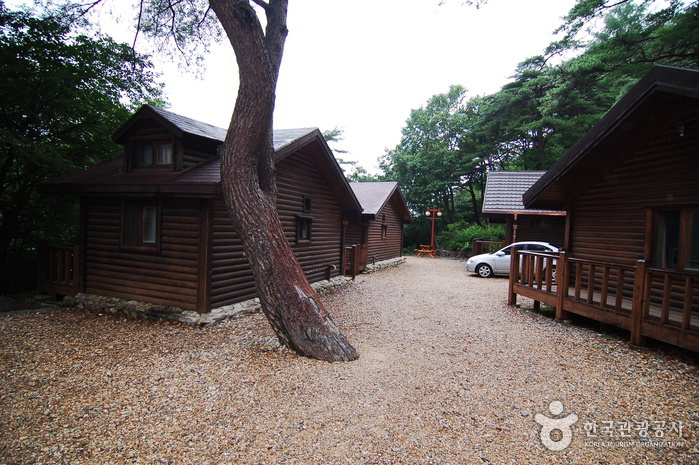
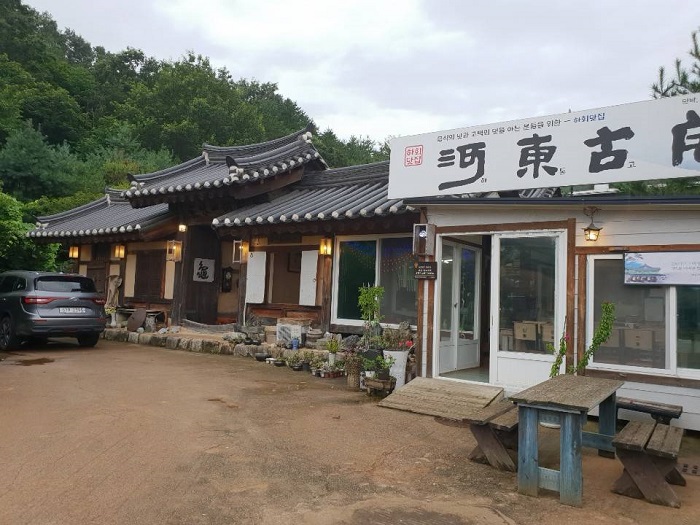
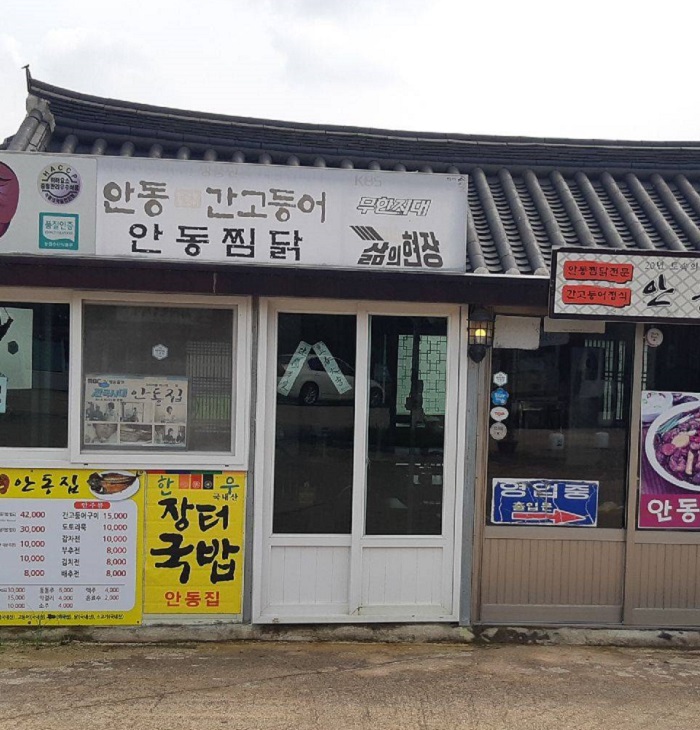
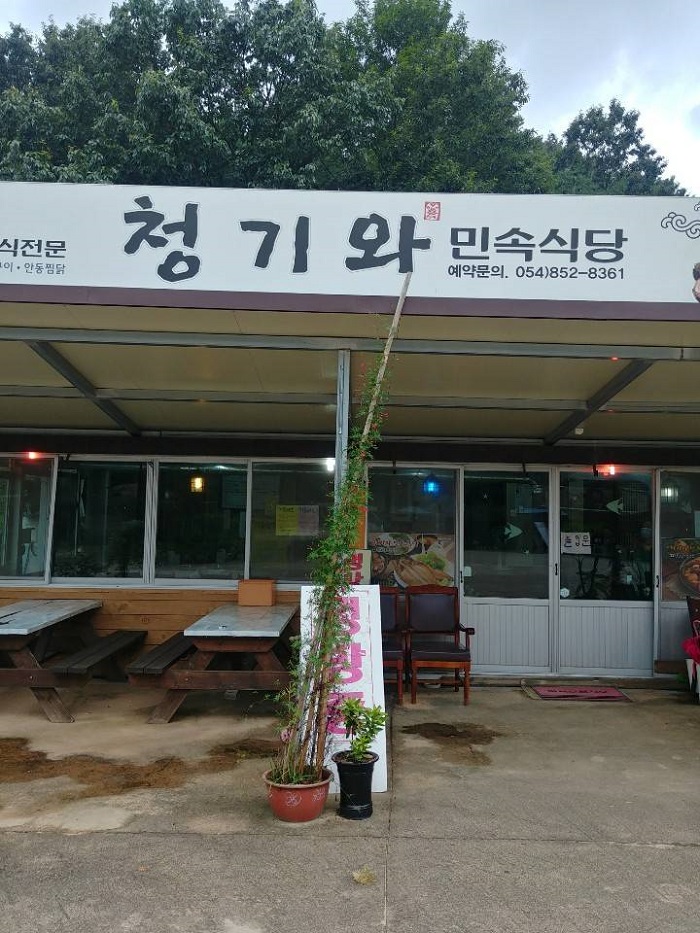
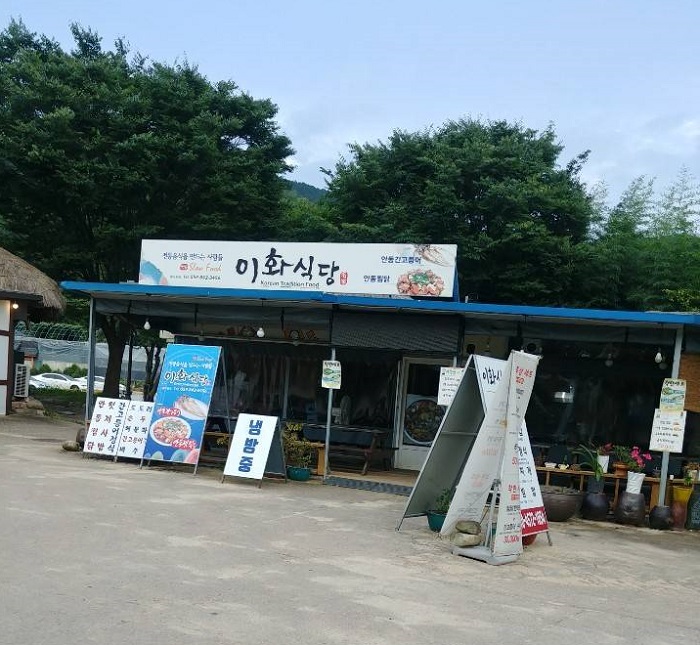
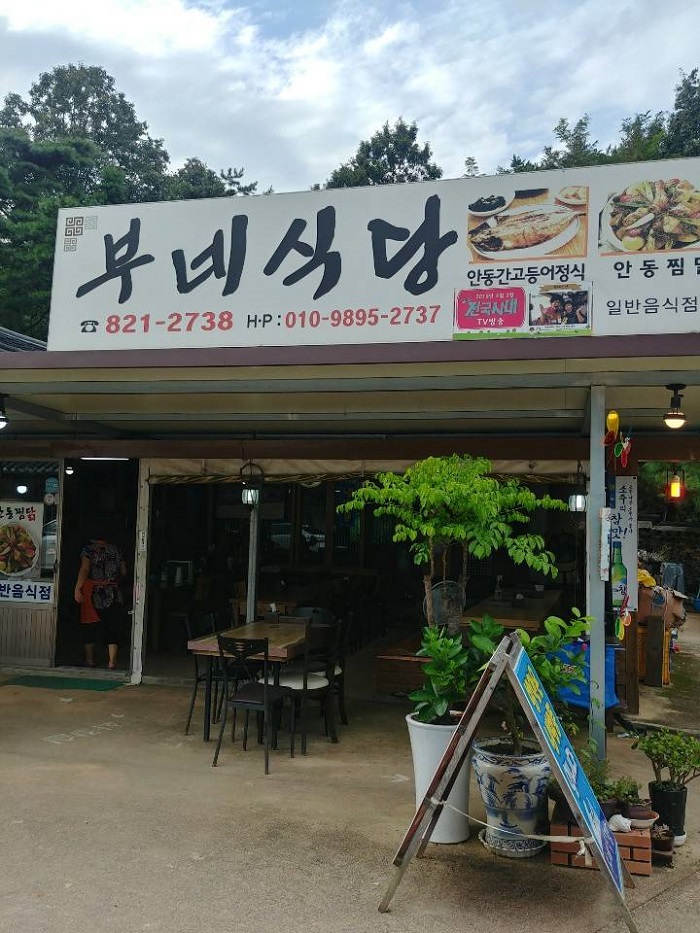
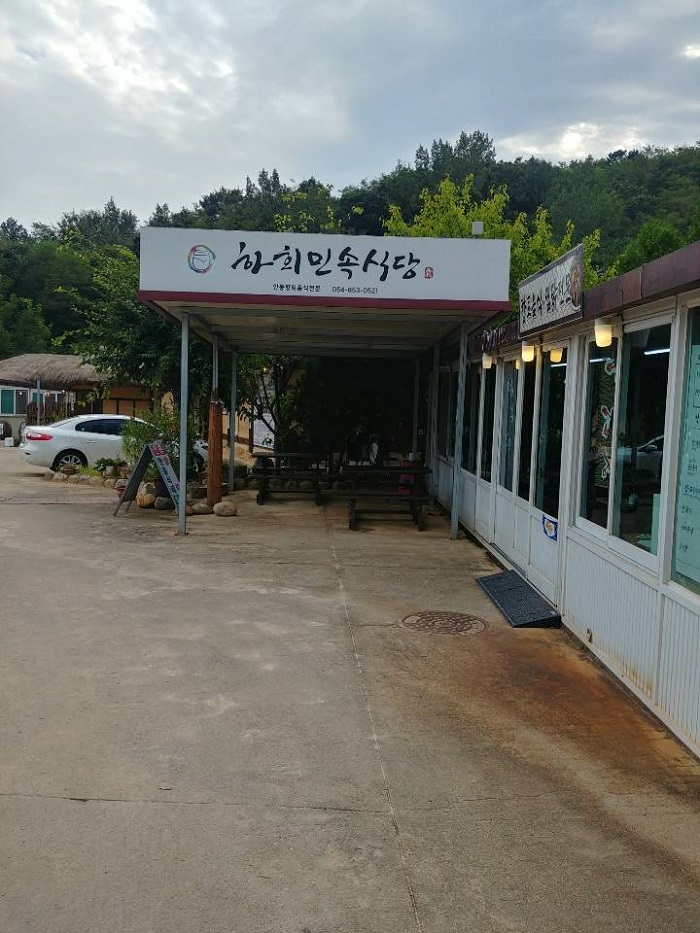
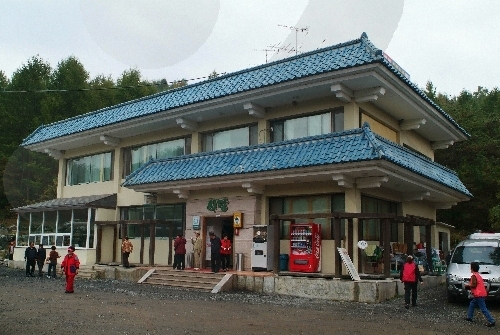
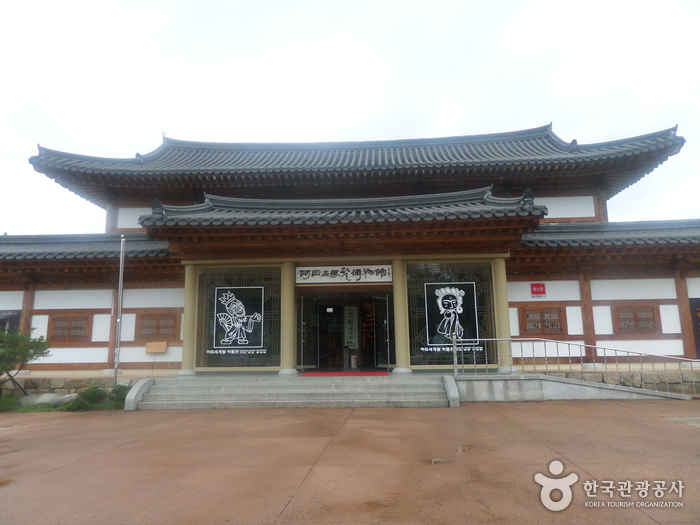
 Français
Français
 한국어
한국어 English
English 日本語
日本語 中文(简体)
中文(简体) Deutsch
Deutsch Español
Español Русский
Русский